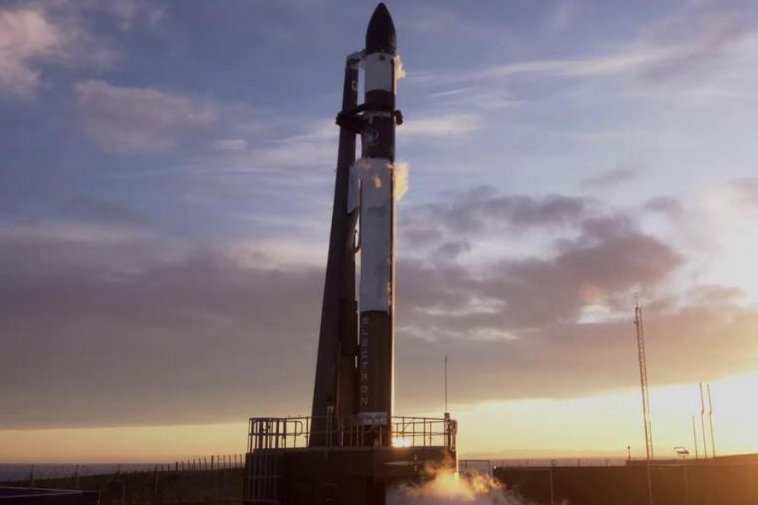Rocket Lab's Electron rocket stands in the glow of a sunset in New Zealand on Friday as it waited for Saturday's launch. Photo courtesy of Rocket Lab
June 13 (UPI) -- A rocket launched five small satellites into orbit from New Zealand early Saturday morning, including a Boston University experiment to measure solar winds and the Earth's magnetosphere.
California-based Rocket Labs, which owns the New Zealand launch site on the Mahia Peninsula, lofted the satellites aboard a company Electron rocket at 1:12 a.m. EDT. The launch was delayed slightly by a cumulus cloud above the pad.
The launch had been postponed twice -- once in May because of travel restrictions amid the coronavirus pandemic and again Thursday due to high winds.
Boston University's experiment, the ANDESITE CubeSat, consists of one satellite the size of a toaster oven that is carrying eight tiny satellites inside. They will be released to form a network that relays data to the small mothership.
The project aims to gain a better understanding of how solar winds change the environment in space near Earth, said Joshua Semeter, a professor of engineering at Boston University.
Electrical currents in the atmosphere run through plasma, or extremely heated matter, created by solar winds, Semeter said.
"It's like wires connected to a light bulb," he said. "We want to study how the current is distributed in the wires. That, in turn, will tell us a lot about how the power is generated in the distant magnetosphere, a topic that is not well understood."
Such information could help predict space weather, including disruptions to satellite communications and Global Positioning Satellite networks, he said.
Sensors on the ground will record conditions in the sky as the ANDESITE network flies over the northern pole regions where the aurora borealis is common.
Because the mission also carries spy satellites for the U.S. government, the company declined to reveal the orbit altitude. The aurora borealis occurs at altitudes of about 75 miles to 110 miles up.
Semeter said the ANDESITE mothership initially will orbit 310 miles high and then drop to about 248 miles to before releasing the mini satellites..
The experiment is part of NASA's CubeSat Launch Initiative, which promotes the use of small satellites for new space science experiments.
The mission also carried three payloads for the National Reconnaissance Office, which oversees the nation's spy satellites for intelligence agencies, as well as the M2 Pathfinder communications satellite for the University of New South Wales and the Australian government.
Rocket Lab named the mission "Don't Stop Me Now."
It's the 12th mission launch of an Electron rocket, which is considered a small vehicle with about 34,000 pounds of thrust on liftoff. By comparison, SpaceX's Falcon 9 is capable of 1.7 million pounds of thrust on liftoff.
The mission doesn't include testing or development for Rocket Lab's continuing efforts to make the first-stage booster reusable.















